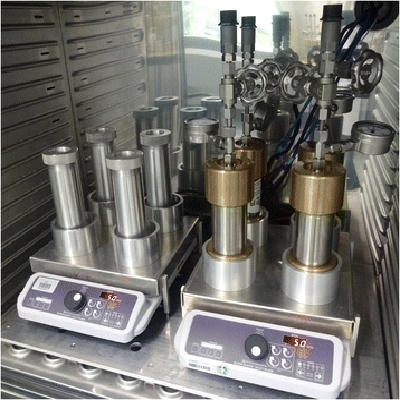
Effect of high pressure on hydrocarbon-degrading bacteria
Effect of high pressure on hydrocarbon-degrading bacteria
The blowout of the Deepwater Horizon in the Gulf of Mexico in 2010 occurred at a depth of 1500 m, corresponding to a hydrostatic pressure of 15 MPa. Up to now, knowledge about the impact of high pressure on oil-degrading bacteria has been scarce. To investigate how the biodegradation of crude oil and its components is influenced by high pressures, like those in deep-sea environments, hydrocarbon degradation and growth of two model strains were studied in high-pressure reactors. The alkane-degrading strain Rhodococcus qingshengii TUHH-12 grew well on n-hexadecane at 15 MPa at a rate of 0.16 h−1, although slightly slower than at ambient pressure (0.36 h−1). In contrast, the growth of the aromatic hydrocarbon degrading strain Sphingobium yanoikuyae B1 was highly affected by elevated pressures. Pressures of up to 8.8 MPa had little effect on growth of this strain. However, above this pressure growth decreased and at 12 MPa or more no more growth was observed. Nevertheless, S. yanoikuyae continued to convert naphthalene at pressure >12 MPa, although at a lower rate than at 0.1 MPa. This suggests that certain metabolic functions of this bacterium were inhibited by pressure to a greater extent than the enzymes responsible for naphthalene degradation. These results show that high pressure has a strong influence on the biodegradation of crude oil components and that, contrary to previous assumptions, the role of pressure cannot be discounted when estimating the biodegradation and ultimate fate of deep-sea oil releases such as the Deepwater Horizon event.


